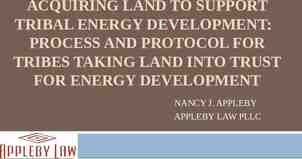How to Turn Around Troubled Schools and Accelerate the College
54 Slides7.01 MB
How to Turn Around Troubled Schools and Accelerate the College Completion Rate for all Students via Whole Child approaches and Social-Emotional and Character Development Maurice J. Elias, Ph.D. Dept. of Psychology, Rutgers University Director, Rutgers Social-Emotional and Character Development Lab (www.secdlab.org) Director, The Collaborative, Rutgers’ Center for Community-Based Research, Service, and Public Scholarship (engage.rutgers.edu) 848-445-2444 [email protected] FEA/NJPSA/NJASCD Fall Conference, Thursday, October 20, 2016 Ocean Place Resort in Long Branch, NJ.
From John W. Whitehead Children are the living message we send to a time we will not see. So . What messages are we sending when we send children based on the way we organize and lead our schools?
How Would You Like Your Children to be Treated in School?
What Kind of Schools Do you Want for YOUR Grandchildren? 4
NJSHACC Guidelines for Successful Schools The Culture of a Learning Organization INSPIRING of one another CHALLENGING .take risks to improve SUPPORTIVE .collective efficacy SAFE AND HEALTHY others’ keepers ENGAGED collaborative norms RESPECTFUL .no-fear communication COMMUNITIES OF LEARNERS set and pursue goals for learning together See: http://selinschools.org/new-jersey-culture-and-climate-coalition/
Developmental Rights and Ethical/Moral Imperatives Children need a supportive, nurturing environment created by caring adults for them to thrive, and all children can thrive Those working in the educational context, in any position, must act with respect, challenge, caring, safety, civility, support, inspiration, and encouragement of nurturance and resilience
Social-Emotional Competence and Character Development (SECD): A Coordinated Framework Provides Synergy The Jumbled and Fragmented Schoolhouse r a Ch er t ac School-Wide Efforts Ed Violence Prev Academic Skills ATOD Ed Community Involvement Sex Ed Families a r n in e Health L e c Servi Ed g SECD A School of SocialEmotional Competence & Character Violence Sex Ed Health Ed Academic Skills Service Learning ATOD Prev Ed Character Ed SCHOOL-FAMILY-COMMUNITY PARTNERSHIPS
College, Career, Community, & Life Ready What happens between here and here?
We are Focusing Our Goals Too Narrowly Preparation for College Completion“ ” Shift Happens Ready, Willing, and Able– Savitz-Romer & Bouffard
Every Individual Must Decide, Every Individual is Involved in Leadership
What Allows Schools to Foster Resilience? True academic and life resilience integrates intellectual, emotional, and social facets of learning. These are inextricably interconnected. Positive, CharacterBuilding School Culture and Climate Habits of mind that include: Explicit Instruction in SEL Skills Source: SEL and Academics: Research Brief, Collaborative for Academic, Social and Emotional Learning, 2007. curiosity, explaining one’s reasoning, feedback processes, asking questions, defining and solving problems, striving to communicate clearly and proudly.
What Skills are Needed for Success in School and Life/Performance Character? Recognize one’s emotions, values, strengths, and limitations Manage emotions and behaviors to achieve one’s goals Selfawareness Selfmanagement Show understanding and empathy for others Life Success Social awareness Responsible decision making Relationship skills Make ethical, constructive choices about personal and social behavior Form positive relationships, work in teams, deal effectively with conflict
Benefits of SECD Good Science Links SECD to the Following Student Gains: Social-emotional skills Improved attitudes about self, others, and school Positive classroom behavior 10-11 percentile-point gains on standardized achievement tests And Reduced Risks for Failure: Conduct problems Aggressive behavior Emotional distress Source: Durlak, J.A., Weissberg, R.P., Dymnicki, A.B., Taylor, R.D., & Schellinger, K. (2011). The Impact of Enhancing Students ’ Social and Emotional Learning: A Meta-Analysis of School-Based Universal Interventions. Child Development. (available at www.casel.org) and M. Berkowitz & M. Bier, What works in character education. (Washington, DC: Character Education Partnership, 2006) (available at www.characterandcitizenship.org.)
Resilience Comes from a Confluence of SECD and Supportive School and Community Environments EvidenceEvidence- BasedSECD SECD Based Programming Programming andPromising Promising and Practices Practices toSupport Support to TheWhole Whole The Childand andAll All Child Children Children Safe,Caring, Caring, Safe, Cooperative, Cooperative, Well-Managed Well-Managed Learning Learning Environments Environments TeachSECD/ SECD/ Teach Performance Performance Character Character Competencies Competencies Provide Provide Opportunitiesfor for Opportunities PositiveContributions, Contributions, Positive Recognition,and and Recognition, Senseof ofPurpose Purpose AASense AndPride Pridein inBeing Being And Partof ofthe theSchool School Part ForALL ALLChildren Children For LessRisky Risky Less Behavior,More More Behavior, Assets,&& Assets, Positive Positive Development Development Greater Greater Attachment, Attachment, Engagement,&& Engagement, Commitment Commitment toSchools Schoolsof of to Character Character Better Better Resilience Resilience andSuccess Success and inSchool School in andLife Life and
If You Had a Magic Wand, What Values Would You W ish Your Children Would Internalize Forever? Friendship Long Life Peace Riches Wisdom Popularity Beauty Family
challenges our youth carry around with them each day Increased pace of life Greater economic demands on parents Alterations in family composition and stability Breakdown of neighborhoods and extended families Weakening of community institutions Unraveling of parent-child bonds due to work, school demands, time, drugs, mental health, and economic burdens Climate of war, terror, and societal bullying and intimidation Ongoing exposure to an array of digital media and pervasive advertising that encourage violence as a problem-solving tool and other health-damaging behaviors and unrealistic lifestyles
Courage, Persistence, and Support Structures/Empowering Settings Are Needed to Sustain Nurturance and Resilience and Truly Foster Moral and Performance Character
7 Principles for School Turnaround 1. Define Success in Phases 2. Define the Task as One of Ethical and Moral Responsibility and Educational Equity 3. Build a Leadership Team, and Allow This Team Time to Learn and Grow Together 4. Create and Communicate a Compelling School Identity 5. Engage and Empower Youth in Meaningful Roles in the School 6. Network With Others on a Similar Mission 7. Connect SEL to Existing Mandates
7 Principles for School Turnaround 1. Define Success in Phases Students must be in well-managed classrooms and engaged in learning tasks. For this to happen, they need to have appropriate skills and values, which they will be more likely to acquire when they are in a caring, respectful, and supportive, yet challenging school environment. There are no shortcuts.
How Do We Teach SECD in MOSAIC? MOSAIC Mastering Our Skills And Inspiring Character
What is the MOSAIC Approach to Building SECD? 1. Skill Mastery 2. Character Inspiration 3. Purposeful Action Principal Kafele
Lessons for Skill Mastery Four Focal SEL Skills: 1. 2. 3. 4. Emotion Regulation Communication Empathy Social Problem Solving Trigger Situations and SMART Goals
Lessons for Character Inspiration 5 Character Virtues Supporting “Noble Purpose” (Damon, Templeton) 1. 2. 3. 4. 5. Constructive Creativity Responsible Diligence Optimistic Future-mindedness Helpful Generosity Compassionate Forgiveness
Successful 21st Century Schools Understand and Emphasize That: Systematic, comprehensive, and effective approaches to school-wide SECD are an essential component of all students’ academic and life success
7 Principles for School Turnaround 2. Define the Task as One of Ethical and Moral Responsibility and Educational Equity It is not optional for children to be in a positive school climate and to systematically learn socialemotional competencies and character virtues essential for life, college, and career success. True educational equity requires full preparation for the tests of life, both academic and social-emotional.
SECD is Directed by Purpose–Ideally, Positive Purpose Many persons have a wrong idea of what constitutes true happiness. It is not attained through self-gratification but through fidelity to a worthy purpose. Helen Keller If you believe you are here for a purpose, your energies will be focused. A sense of mission will give you strength. You will do remarkable things. Rabbi Lord Jonathan Sacks Everyone can be great because everyone can serve. Martin Luther King, Jr.
7 Principles for School Turnaround 3. Build a Leadership Team, and Allow This Team Time to Learn and Grow Together Before tackling the most significant school challenges, schools need to build their own local resource expertise in the model of a professional learning community that fosters competence and networking regarding school culture and climate and SECD.
MOSAIC Approach: Best Practices Focus on a few key skills Focus on a few, salient values, ideally consistent with school motto, mission, values Children are amnesiacs--- focus on generalization Continuity and salience are crucial You can’t succeed without others’ support– and neither can your students
7 Principles for School Turnaround 4. Create and Communicate a Compelling School Identity Students and staff want to go to a school that stands for something. By identifying core values, key themes, or other forms of identity, and by infusing that identity in all aspects of school life, schools become places that have meaning and generate commitment and enthusiasm.
NJSHACC Guidelines for Successful Schools The Culture of a Learning Organization INSPIRING of one another CHALLENGING .take risks to improve SUPPORTIVE .collective efficacy SAFE AND HEALTHY others’ keepers ENGAGED collaborative norms RESPECTFUL .no-fear communication COMMUNITIES OF LEARNERS set and pursue goals for learning together See: http://selinschools.org/new-jersey-culture-and-climate-coalition/
7 Principles for School Turnaround 5. Engage and Empower Youth in Meaningful Roles in the School Including students ensures that diverse voices are heard. Students are the major shareholders in the school. They are the most invested in having no bullying, gangs, substance abuse, and chaos. Engage them in solving the problems of schools.
Best Practices for Fostering Youth Engagement and Building Students’ SECD: Share Success!! Meaningful, Participatory Student Government Service Learning-- Lions-Quest International Feedback/Sharing Opportunities Open Forums for School Problem Solving Staff/Student Committee Involvement Having a Voice/Diversity Monitoring Buddies, Mentors, and Tutors Opportunities for Reflection Opportunities for Identifying and Developing one’s Laws of Life BFBN: Where YOU are the news! Examples in Social Climate LC
7 Principles for School Turnaround 6. Network With Others on a Similar Mission Schools face many common problems and often have developed solutions or at least have found what does not work. Everyone need not recreate the wheel or create the square wheel. By networking and sharing, all boats rise together, and faster.
Academy for Social-Emotional Learning in Schools: SELinSchools.org Overarching goals are to address the gap in professional development of school leaders and teachers that exists today and to create a community for on-going mentoring, resource support, and sharing of experiences from walking the talk! The Academy offers a virtual Professional Learning Community and two certificate programs. Certificate for School Leadership in Social-Emotional Learning and Character Development. Certificate for Instruction of Social-Emotional Learning and Character Development. (sel.rutgers.edu) Academy Overview Video: http://sel.cse.edu/
What is the Online Professional Development Community? A unique feature of the courses and the certificate is participants’ involvement in a virtual Professional Learning Community (vPLC). Beginning with participation in one’s classes and practicum, there is an emphasis on being part of a community of learners who support and assist one-another during the courses– and beyond.
7 Principles for School Turnaround 7. Connect SEL to Existing Mandates Don't simply add social-emotional learning and character development. Social-emotional competencies and character are essential to all areas of schooling. Connect to mandates such as whole child, bullying prevention and response, discipline and codes of conduct, substance abuse, comprehensive school health, and positive school culture and climate.
It’s Like Reading Students must read well to succeed in any other subject area. Similarly, students must have social-emotional competencies to succeed in any learning environment. And so we must have dedicated periods of reading instruction, but also infusion of reading throughout the school day and year. It is identical with social-emotional competence.
{Text} Complexity: The SEL of School and Life The CCSS requires students to engage deeply in much more complex text than most have been exposed to previously. And not just read the text, but deeply engage in its vocabulary, point of view, and author’s intent, all while connecting to prior knowledge and prior reading. Students will experience And so may need . Longer periods of engagement with text Self-control as they get wiggly (Self-Management) Self-motivation to stay engaged with text (Self-Management) Perspective-taking as they make meaning of the text (Social Awareness) Frustration with unfamiliar vocabulary or more complex text structure Seeking help if they struggle with longer passages, unfamiliar vocabulary and structure (Relationship Skills) Manage stress as they encounter more unfamiliar vocabulary than before Empathy for classmates who are struggling (Social Awareness) Increased frequency working with peer groups to examine and problem solve around text Setting and achieving goals (Self-Management) Understanding social and ethical norms for behavior when working in peer groups (Social Awareness) Communicating clearly and working cooperatively with peers (Relationship Skills) Considering the well-being of self and others (Responsible Decision-Making) (Self-Management) 38
School Climate/Belonging/Respect, Harassment, Intimidation, and Bullying, and Academics “There is powerful evidence that school climate affects students’ self-esteem and self-concept. School climate also colors school-based risk-prevention efforts. Effective riskprevention and health-promotion efforts are correlated with a nurturing school climate. It also promotes academic achievement. As a result of these findings, fostering socially, emotionally, and physically safer schools has become a primary focus of the U.S. Department of Justice and virtually all state education departments.” (Cohen, 2006, p. 212-213.) From Cohen, J. (2006). Social, Emotional, Ethical, and Academic Education: Creating a Climate for Learning, Participation in Democracy, and Well-Being. Harvard Educational Review, 76 (2), 201-237.
Recommendations to Guide Policy Every teacher, student support services provider, after-school program staff member, and administrator should have demonstrated competence in implementing evidence-based SECD programming and positive climate promotion at the classroom and/or school level (as appropriate).
Integration of SECD into Lessons Reading Written Expression Use feelings vocabulary in journal entries, poetry, essay writing; read wordless books Identify how passages reflect emotions FEELINGS Draw where people feel emotions; feelings and colors Math Collect and graph “feelings” data; track emotions during problem solving Computer Literacy Computer generated illustrations of feelings; download songs reflecting emotions Art SECD Lessons Build skills via games, videos; practice with role plays and application to group work
Integration of SECD into Lessons: Fill in the Blanks Reading Art Written Expression Responsibility Social Studies SECD Lessons Math/ Other Subject
Assessing What Matters Tony Bryk: Assessment for Research and Assessment for Improvement
Choices in Organizing Report Card Comments How are your report card comments organized? How was the decision made to do it that way? How often has that decision been reviewed? Choices in organizing comments: Individualized vs. Default? Comments across classes vs. by each class vs. only some classes If Default List Each comment rated vs. Select some from a list? Option to write in comments? Number of comments? On drop-down list? If selecting, how many can be assigned per quarter?
District-Selected SEL Skills Self-Awareness & Self-Management Shows Emotional Awareness (Recognize and label one’s emotions and connect feelings to situations) Shows Emotion Regulation and Focus (Use strategies to keep oneself calm and focus on goals) Social Awareness & Relationship Skills Recognizes and Respects the Feelings and Perspectives of Others (Understand and respect others’ feelings and point of view; appropriately offer help to others) Establishes and Maintains Cooperative Relationships (Making friends and appropriate interactions with peers and adults) Constructively Resolves Interpersonal Conflict (Stay calm and in control during conflicts with others)
District-Selected SEL Skills Responsible Decision Making Independent Decision Making (Make good and safe decisions on your own and begin to think of solutions to problems) Problem Solving in Groups (Being a valuable, involved, and constructive participant in groups settings)
Courageous Leadership Table discussion of what you believe is most needed to have the kind of schools you want/need to be able to create and what is holding you back from doing what you know needs to be done
Questions/Reflections
Research Confirms Long-Held Good Sense To educate a person in mind and not in morals is to educate a menace to society. -- Theodore Roosevelt We are going to ask our children not just to talk but to act, serve, and live in accordance with a set of higher values and with a buoyant optimism.-- R. Sargent Shriver Intelligence plus character - that is the goal of true education. -- Rev. Dr. Martin Luther King, Jr.
From Vision to Actuality: Troubleshooting Ask yourself these questions:
What are the opportunities and obstacles to my school becoming a School of Character? What strengths can I mobilize to address this opposition? What are the compelling rationales? How can I compensate for opposition? Offset it? How will I exercise Courageous Leadership?
What are the actions I most need to take in the next week? in the next two weeks? in the next month? in the next 2-3 months? in preparation for the end of the school year? in preparation for the start of the next school year? who else must be involved?
The Time For Courageous Leadership and Action is Now!! “Don’t let what you cannot do interfere with what you can do.” John Wooden “The children are watching.”
Contact Information Maurice J. Elias, Ph.D. Department of Psychology, Rutgers University Director, Rutgers University Social-Emotional and Character Development Lab ( www.secdlab.org) Co-Director, Academy for Social-Emotional Learning (SELinSchools.org) [email protected] 54



























































